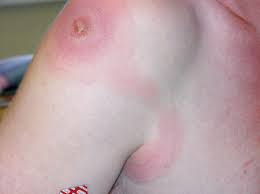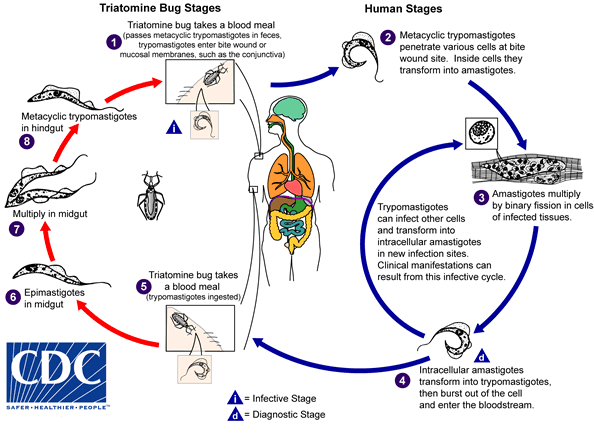International travel has never been more popular. College campuses offer cultural and service-oriented trips to experience the world outside the classroom. Church groups travel overseas to help with the sick or dying in remote villages and work projects for clean water. Families travel abroad for educational purposes or child adoptions.
This is just a few of the reasons for traveling outside the United States. But to travel abroad, you need to be aware of the health risks ahead.
Sleeping sickness, trypanosomiasis, can be fatal if not treated. Spread through the bite of an infected tsetse fly, more than 60 million people who live in rural East, West, and Central Africa are at risk of contracting sleeping sickness. A widespread tropical disease, sleeping sickness is a species native to the African continent.
With 10,000 new cases reported to the World Health Organization (WHO) each year, many cases are un-diagnosed or not reported. Over 95% of the cases of human infection occur in Tanzania, Uganda, Malawi, and Zambia.
The stats are not meant to discourage travel to these parts of Africa but to be aware if traveling for a longer period of time your exposure increases.
To prevent the spread, early diagnosis is key so advanced stages are not reached. Though found in cattle and other animals, the spread of tsetse fly bites is due to the lack of education in these areas to get treated. Knowing the symptoms are key in helping those who may be unaware they contracted the disease.
- Stage one: a red sore develops within a few weeks. A fever, swollen lymph glands, headaches, and aching muscles or joints are a first sign.
- Stage two: the disease attacks the central nervous system. Sleep is affected with jolts to the circadian rhythm. Slurred speech and personality changes are red flags.
- Stage three: seizures can erupts along with confusion or difficulty walking or talking. These problems can mount over years of not being diagnosed.
- Stage four: un-diagnosed cases can go into years of distress on the body and can lead to death after 6 months to year three; however, some cases have been known seven years into the disease.

“Trypanosoma brucei gambiense is found in 24 countries in west and central Africa. This form currently accounts for 98% of reported cases of sleeping sickness and causes a chronic infection. A person can be infected for months or even years without major signs or symptoms of the disease. When more evident symptoms emerge, the patient is often already in an advanced disease stage where the central nervous system is affected.”
“Trypanosoma brucei rhodesiense is found in 13 countries in eastern and southern Africa. Nowadays, this form represents under 2% of reported cases and causes an acute infection. First signs and symptoms are observed a few months or weeks after infection. The disease develops rapidly and invades the central nervous system. Only Uganda presents both forms of the disease, but in separate zones.”
Outside of Africa, the southern United States and South America, Central America, and Mexico have seen similar cases known as chagas disease. An inflammatory, infectious disease caused by the parasite Trypanosoma cruzi, which is found in the feces of the triatomine (reduviid) bug, causes symptoms similar to sleeping sickness in Africa.
Unlike the traditional African sleeping sickness, chagas disease can be brief (acute) or long-lasting (chronic). The acute phase can last for weeks or months and have the same symptoms as the African counterpart with fever, swollen glands, rash, headache, or body aches.
Chronically, chagas may occur 10 to 20 years after the initial infection or may disappear altogether. Chronic condition symptoms may include:
Irregular heartbeat
Congestive heart failure
Sudden cardiac arrest
Difficulty swallowing due to enlarged esophagus
Abdominal pain or constipation due to enlarged colon
Treatment is reliant on the specific type of infection (two infections are reviewed and diagnosed) and the disease stage. Though the main treatment, pentamidine, is widely available in the United States, the CDC must prescribe and provide advanced treatments.
A cure is not known at this time for sleeping sickness and requires cerebrospinal fluid every two years so relapses can be proactively treated.
Prevention is key for travelers to South America, Central America, Mexico, and parts of Africa where sleeping sickness are prevalent. Although most common within the residential community, some precautions for travelers includes:
Avoid sleeping in a mud, thatch or adobe house. These types of residences are more likely to harbor triatomine bugs.
Use insecticide-soaked netting over your bed when sleeping in thatch, mud or adobe houses.
Use insecticides to remove insects from your residence.
Use insect repellent on exposed skin.
If you believe your insomnia is due to recent travel in one of these countries stated above, contact your family physician immediately. Once a doctor rules out sleeping sickness, a sleep study may be part of your future treatment.
Contact Alaska Sleep Clinic today to speak with one of our board-certified sleep specialists.









